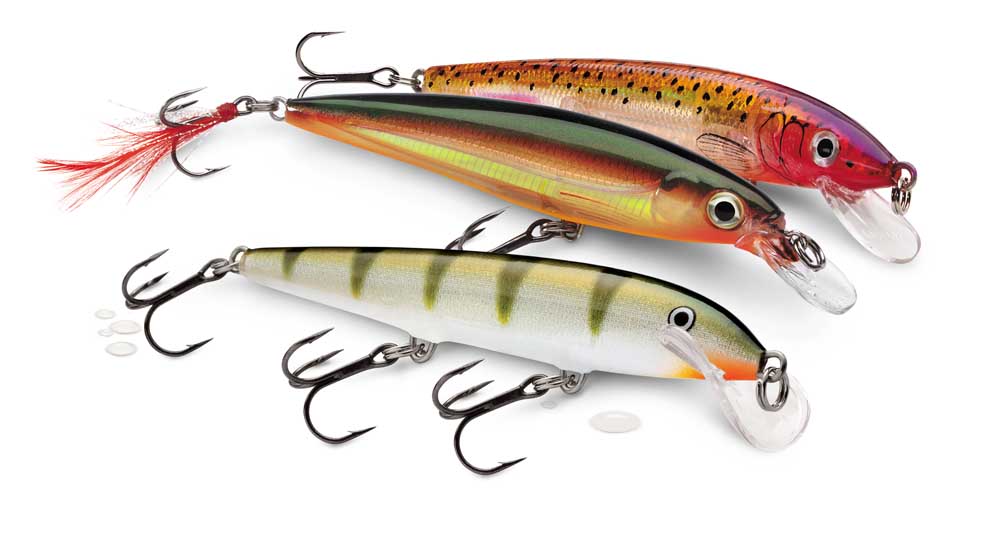Jerkbaits come in a variety of sizes, shapes and colors — actions too. Some swim erratically, others glide from side to side in a more predictable fashion. Certain models float while others suspend. Still others sink at a slow, predetermined rate. But one thing they all have in common is this: bass love jerkbaits.
Whether I’m fishing over submerged grass, around flooded brush or along bluff banks, if the water is reasonably clear, you can bet I’ll have a jerkbait tied on. When it comes to finding and fooling fish in clear water, there aren’t many lures that are as effective as a jerkbait.
Simply put, they work!
If I’m fishing a jerkbait — regardless of its swimming characteristics — the first thing I try to determine is the proper cadence for the situation — when to move the lure and when not to. That one thing can be a challenge.
Bass are moody creatures. We all know that. And making them bite isn’t always easy. Throw in varying factors like cold fronts or intense angling pressure, and things can get even more complicated.
Jerk, Jerk, Pause
The most common mistake I see recreational anglers make is in how they move the lure during the retrieve. Some have a tendency to overwork it, others won’t move it enough. Essentially, they lack rhythm.
Sure, there are times when this can work. But more times than not, a specific cadence is required to fool fish consistently.
If you ask a pro for his or her opinion on cadence, they’ll tell you a jerk-jerk-pause retrieve is best. And for the most part, I would agree with that. But what they’re not telling you is how fast to jerk or how long to pause the lure. Only the fish can tell you that.

When bass are feeding aggressively, just about any retrieve will work. Heck, throw a set of boat keys at them, and they’re likely to bite. But when they’re not in the mood to feed, which is most of the time, then what?
It comes down to the right jerkbait, combined with the correct cadence and a little patience to let the pattern develop. Fit these pieces of the puzzle together and you’ll be on your way.
Process of Elimination
If I’m throwing a jerkbait and conditions are favorable, I’ll start with a brisk retrieve, only stalling the lure briefly. And I’ll maintain the basic jerk-jerk-pause cadence as I cover water. If the fish are inclined to feed, this general approach will usually work well.
But if the fish won’t respond and I feel I’m in a productive area, then I’ll slow the retrieve, using fewer pulls with longer pauses. I still snap the rod tip aggressively, but the cadence is slower and the pauses are more pronounced.
If the temperatures are really cold and I believe the bass are suspended or inactive, I’ll start slow, jerking less frequently and letting the lure stay motionless for much longer periods … sometimes 30 seconds or more. (Generally speaking, the slower the bite, the slower the cadence should be.)
Let’s assume we’re in a good area and we hook a fish. The first thing I want to establish is what cadence, or part of the cadence, produced the strike. Was the lure moving or was it paused? How fast was it moving or how erratic was the action? Next I want to determine the approximate depth and/or position of the fish when it struck — what type of cover or structure did it come from?
For instance, I may be fishing over a tapering point when I connect with a sizable fish. Once I determine its approximate depth, then I want to know whether it was on the flatter part of the point or near the drop off and if it was relating to any specific type of cover, like a stump, boulder or clump of grass. Once I know these things, then it’s only a matter of covering water to duplicate the scenario.
Other Considerations
Over the years I’ve learned that jerkbaits can work in a multitude of situations. They’re great around floating docks, standing timber, in canals and ditches, over submerged grass, or they can be one of best choices for bare bank. They’re also great on schooling fish.
It’s more about figuring out which model to throw rather than where. As a start, I recommend carrying some that will float, as well as some that suspend. There will be times when a floater is best, like when fish are shallow or feeding up in the water column. For those times when they’re deep and less likely to travel for the lure, that’s when a deeper diving suspending model will shine.

Action, too, is important. I suggest carrying some jerkbaits that will deliver a subtle action and others that are more erratic. Size and color can also make a difference, so carry an assortment of 3-inch to 5-inch models in varying baitfish-matching patterns, like gold, silver, shad, etc.
By experimenting with a variety of jerkbaits, you’ll learn which is best for any given situation. And don’t worry … the fish will help you figure it out.
So, the next time you’re on the water and you’re not sure what to throw, give jerkbaits a try. And remember to experiment with cadence during the retrieve. Figuring out the proper cadence may take some time, but once you dial it in, you’re likely to see quick and steady results.





